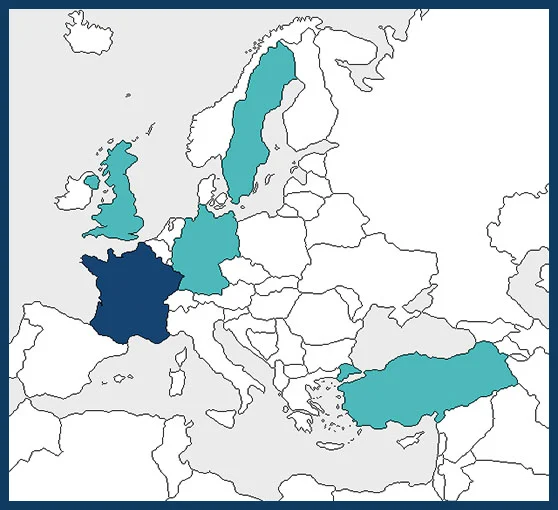12-2013 to 12-2016
€ 675 350
Jean Clobert
jean.clobert@EcoEx-moulis.cnrs.fr
CNRS Moulis – FRANCE (Coordinator)
CNRS – Université Paul Sabatier de Toulouse – FRANCE
RD Montpellier – FRANCE
GEOMAR/Helmholtz Centre for Ocean Research, Kiel – GERMANY
Umea University – SWEDEN
Mugla University – TURKEY
University of Aberdeen – UNITED KINGDOM
Bournemouth University – UNITED KINGDOM

Biological invasions occur when barriers limiting species distributions are broken-down, allowing species to extend beyond their natural range areas. In the last century, rates of biological invasions severely increased due to human activities, and are major components of global changes. Species invasions lead to worldwide redistribution of species, sometimes generating severe economical and societal disequilibrium.
Important processes remain to be elucidated regarding the ecological and evolutionary dynamics of non-native populations over the course of invasion. In such a context, characterizing intrinsic biological drivers underpinning invasions is a crucial step towards predicting future patterns of invasion.
A classical approach is to identify relevant biological traits that underpin a species ability to invade a new environment. This ability is species- specific, and depends on certain traits. The identification of relevant biological traits underpinning successful invasions has mainly been conducted at the interspecific level, but rarely at the intraspecific (i.e. within and among populations) level.
However, recent theoretical studies suggest that traits beneficial in the early phase of an invasion might differ from those favoured at later stages. Such trait variation along the invasion succession should be visible at both the phenotypic and genetic levels, and should differ between the recently invading populations and the older ones.
For example, at the front of invasion, populations may have higher dispersal rates and/or reproductive strategies favouring the settling of new populations, while more recent populations may have a reduced dispersal propensity or a relaxed competition leading to reproductive strategies favouring population growth and stability. Overall, evolutionary theory predicts an individual or a population to display a specific trait at key steps for a successful invasion to occur and an increased rate of evolution for specific traits selected at the front of colonization. However, the hypothesis of dynamic patterns and the genetic basis of traits’ variation arising along the invasion succession have never been empirically tested.
In this context, PROBIS aims at characterizing patterns of traits variation, and test for the underlying evolutionary processes along an invasion succession. More generally, PROBIS aims at determining how the genetic and phenotypic heterogeneity of invasive populations along an age- gradient of invaded habitats is expressed, and how this may influence the invasion success and rate of non-native species establishment.
A combination of field surveys covering all Europe, genomic tools, large-scale semi-natural experiments and computational modelling will be implemented for the project. Three model organisms (a fish, Pseudorasbora parva, a parasite, Tracheliastes polycolpus and an insect, Crocothemis erythraea) that have clear ecological and socio-economic impacts and for which a detailed characterization of invasion history across Europe already exists will be studied.
The project outputs will be disseminated through diverse media including a website dedicated to the project as well as public conferences and brochures for a large audience public. The relevant stakeholders (mainly freshwater managers including regional and national agencies) will be provided with an effective tool (i.e. a friendly-user modelling platform) that should help them prioritizing and anticipating actions limiting the spread of non-native species.